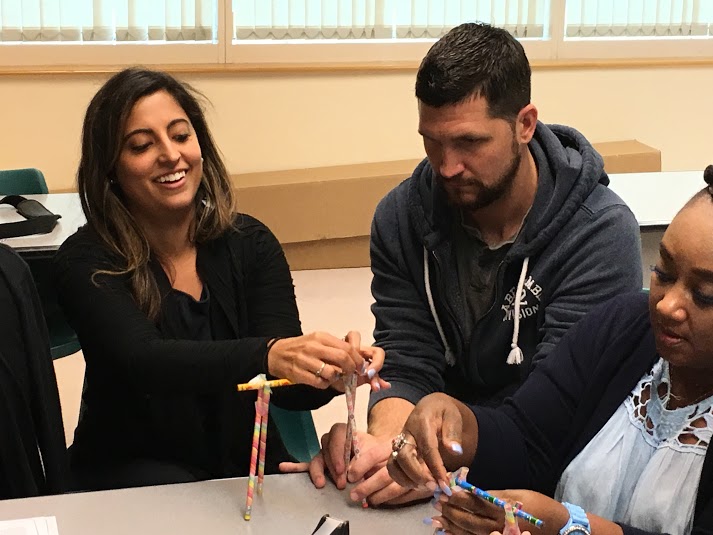
We often hear from school and education leaders:
What we really need help with is improving our teaching human capital…
Our teachers need a lot of help to teach science and science inquiry, especially at the younger grades. At our higher grades, we have dedicated science teachers but in kindergarten through second grade, we have the whole class teachers and they just aren’t that comfortable with teaching science.

Science4Us is effective at meeting this challenge. We designed our program, our materials, and our implementations to provide exemplary inquiry-based science program delivered by generalist teachers. Here’s how:
- Inquiry is built into the instructional model and the lesson plan. The 5E Instructional Model builds the pattern of inquiry into each model. The heart of the inquiry model is the explore, explain, and elaborate sequence. This provides the inquiry approach that’s the gold standard for teaching what science is. Science, particularly in the early grades, is primarily a process. The knowledge and vocabulary are also important but without the inquiry process, the knowledge is not so meaningful
- In the Explore, the students formulate ideas or hypothesis about the content area and then seek to explore these ideas.
- In the Explain, the students seek to articulate what they learned in the Explore process.
- The Elaborate does a number of things but in its purest form, the elaborate should be a refinement of the original exploratory question or an application of that hypothesis in a more far-reaching way. The elaborates not only refine the inquiry or seek to apply it in a more sophisticated manner, it also builds language arts and math skills by providing instruction and practice.
- The Science4Us implementation of the complete 5E instructional model starts with an in-depth Engage section so that the prior knowledge of the students is evoked. Prior hypothesis and common understandings and misunderstanding are surfaced through a number of techniques.
- The 5th E, Evaluate, is a show-what-you;’ve-learned exercise in which knowledge and skills acquired are demonstrated even if the students are preliterate.
- This 5E Inquiry Model is followed by each of the 28 modules covered in Science4Us.
- Science4Us is a complete curriculum which means that it includes:
- A usage pattern of 8 sessions for each module which can be covered in two weeks, four days a week.
- Around 350 interactive exercises that can be delivered as whole class discussions, in small groups, or one on one with a computing device (tablet, Chromebook, computer). Most classes blend these different delivery model with the Engage and Explore being the ones most likely to be done as whole class instructions. Part of this is teachers really like leading Science4Us-based lessons.
- Over a thousand printable activities covering worksheet versions of most of the interactives (especially the evaluates) and also, large numbers of hands-on inquiry-based activities as wells as STEM or STEAM extensions. For instance, the pictures above are taken from a teacher training in which the teachers are asked to the hands-on activities to explore how a swing works in the motion module of physical science.
- Materials just for teachers include lesson plans, teaching tips, and common misconceptions. These materials are typically one to two pages long and in following a strict format, teachers quickly get comfortable delivering Science4Us lessons to their students with minimal preparation.
- The PD model of Science4Us is flexible. Generally, the online videos and tips make accessing the materials, software, and lessons easy so they require minimal training time. The PD time is best used taking the teachers through a module as if they were students so they receive the materials and see how the 5E Instructional Model really does render intimidating concepts into simple steps. Most importantly, it illustrates who a proper structure to 5E-based instruction has the students doing science inquiry as a routine part of the process. In many schools, the PD has several steps of implementation, including having Science4Us staff model lessons to the students. Here is more information on how LearningCity provides help with teacher training for Science4Us, VocabularySpellingCity, and WritingCity.

While many schools have dedicated science teachers from third grade up, most rely on the regular teacher for science instruction in the youngest grades. Equipped with the right curriculum, the natural curiosity of young children can be channeled into a science inquiry model and rather than quashing their enthusiasm, the students can begin to understand the scientific inquiry process and to self-identify as interested in and good at science!
